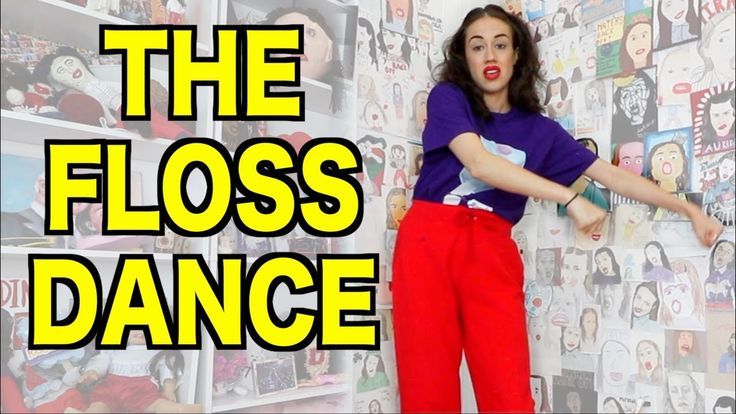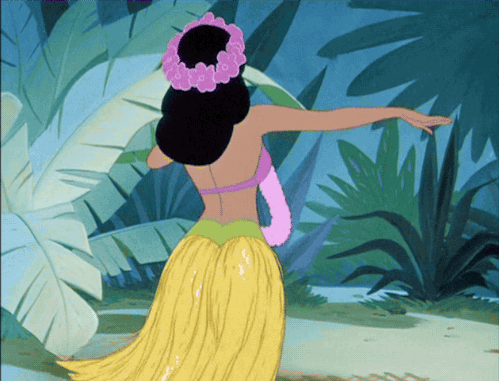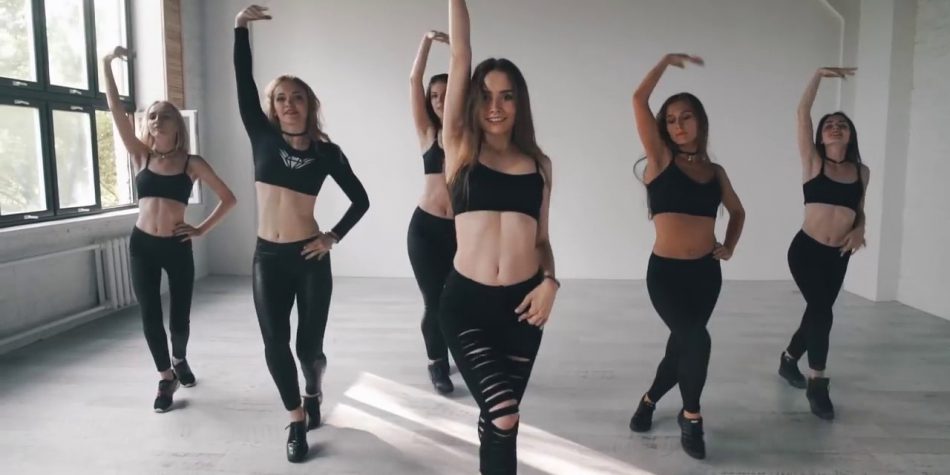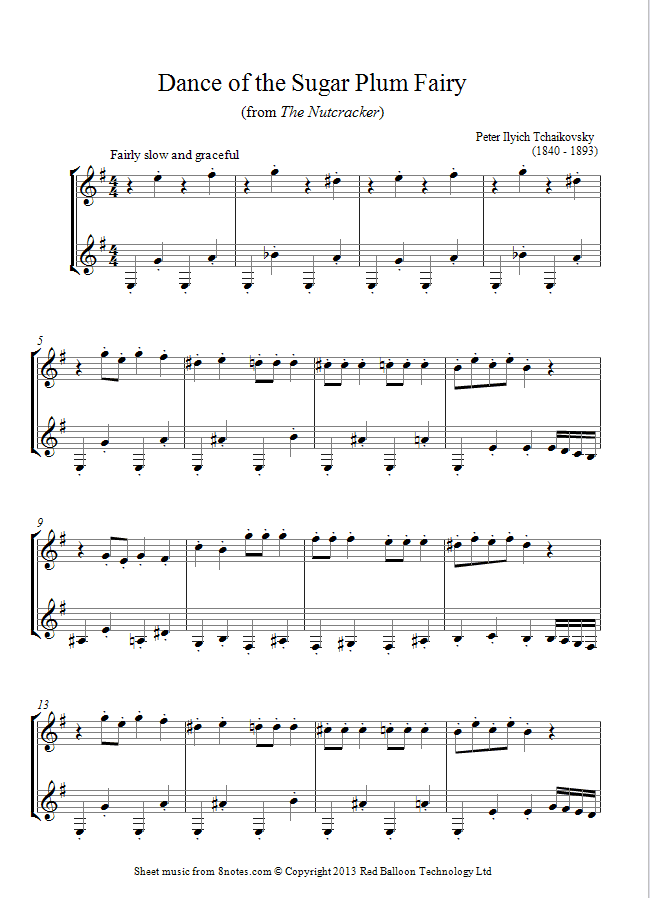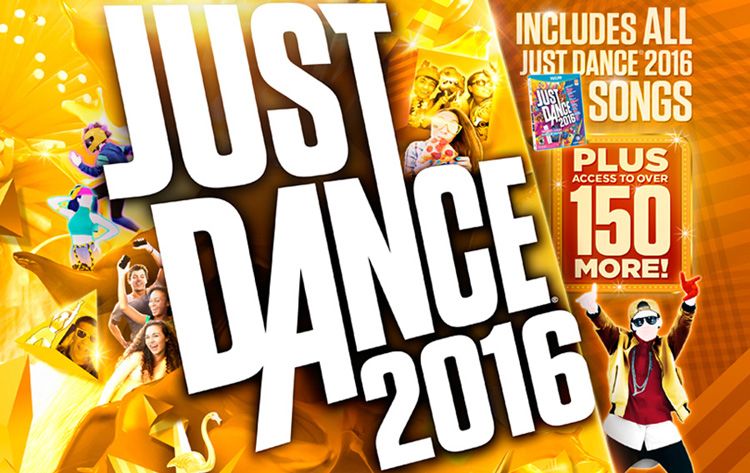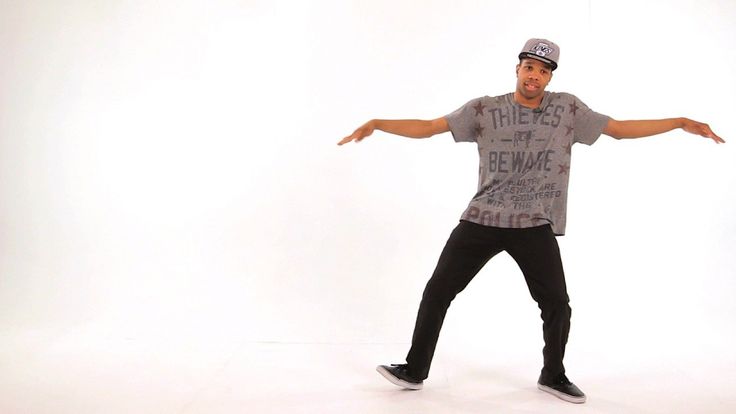How to be comfortable dancing
How to Dance Like Nobody's Watching
Are you shy on the dance floor and afraid of people seeing you dance? Do you feel self-conscious of not being able to keep the beat or not knowing the steps to a dance? It’s totally understandable and very common to feel somewhat inhibited and shy about dancing in front of people. You can feel shy if you are dancing alone or if you are dancing as a couple and trying to remember specific steps.
Practicing is the key to being more confident, improving your ability, and getting out on the dance floor. Practicing can also put yourself in the mindset of ignoring the people who you fear may be watching. The more you feel free in the movements, the less self-conscious you can be. You need to have fun and dance like there is no one watching. So, here are seven tips on how you can dance like nobody’s watching!
Tip #1: Actually, Nobody Is Watching
A lot of people have a fear of being the center of attention and, when you’re dancing, you may feel like everyone’s eyes are on you. But, guess what? They aren’t watching you. When you’re on the dance floor with other people, those people are paying attention to their own performance and execution and they are not paying attention to you. Don’t compare yourself to the other dancers. Don’t use other people as benchmarks. Just concentrate on your own growth. This will allow you to improve and have a sense of freedom because you are letting go of your self-consciousness.
Tip #2: Practice By Yourself, Then With a Partner
Practice is the key in getting better and becoming more comfortable dancing. Find a room where you have some space to move and watch yourself in a mirror. This way you can see what you look like while dancing. It gives you the opportunity to make changes in your movements as you practice. If you are learning a dance with specific steps or one with a partner, set actual practice time where you can work on the steps alone and you and your partner can work on them together. This is a key to feeling more comfortable.
Tip #3: Play Your Favorite Music
It’s easier to practice dance moves to music you like. Put on some of your favorite songs and just let yourself feel the music. Move freely and really get into it. Do this often and you will start to have more confidence and be less inhibited.
Tip #4: Stop Trying to be Perfect
So many of us don’t want to do anything unless we can do it perfectly. That way of thinking is a barrier to improving, especially in the performing arts. There is no “perfect”. Even the winners of dance competitions started at the beginning as novices. Being perfect is a negative mindset. Just embrace where you are in the realm of dancing and know that as you practice, you will get better and less self-conscious.
Tip #5: Take Dance Classes
You can greatly improve your abilities by taking dance classes. In a class, not only do you have instructors to show you what you may be doing incorrectly, but they can also provide you coaching that will help you gain more confidence and be more positive about where you are in growing and developing your dancing skills. If you still feel uncomfortable about dance classes, private dance lessons may be a good first step, where it’s just you and the dance instructor.
If you still feel uncomfortable about dance classes, private dance lessons may be a good first step, where it’s just you and the dance instructor.
Tip #6: Go to Places Where Others are Dancing
Conquer your fear of dancing by going to places where other people are dancing. Fred Astaire Dance Studio of Durham offers practice parties, to give everyone the opportunity to practice their dance moves in a social environment. Everyone there, no matter of their ability, is practicing and trying to improve. And, they are not watching you! They are just dancing and having fun! Start out slowly. Simply being in that environment is a big step. Observe how other people are dancing with each other. Ask a good friend or group of friends to come with you. This is your support group. And, dance with them once you feel comfortable enough. You are on your way!
Tip #7: It’s About Having Fun!
In the end, dancing is about having fun. Feeling the beat of the music and moving along with it using any form, structured or unstructured, is good for you physically and mentally and can “lighten your load,” so to speak. Music is therapeutic. Dancing is great exercise and can also be therapy for diseases like Alzheimers and Parkinson’s. You can shed calories, stress, and worries through dance. Allow yourself to have fun dancing.
Music is therapeutic. Dancing is great exercise and can also be therapy for diseases like Alzheimers and Parkinson’s. You can shed calories, stress, and worries through dance. Allow yourself to have fun dancing.
Call Us for Dance Class Information in Durham Today!
If you want to gain confidence in dancing, you should call us at (919) 489-4313 or fill out the form below to learn more about our classes in Durham! See the dance classes we have available, pictures of students, and read testimonials. Together, we can get you on the dance floor and dance like nobody’s watching!
How to Dance At A Basic "Good Enough" Level
- Chris MacLeod, MSW
It's hard to avoid dancing entirely in social situations, especially when you're younger. Arguably, everyone should at least become passable at it. It's not as hard to pick up the basics as you may think, and it's smoother sailing once you can join some friends who want to dance and hold your own.
You don't have to reach a particularly high standard
You just need to be good enough that you can get on the dance floor, blend in with everyone else, not look like an idiot, and not feel overly uncomfortable while you're there. (Lots of people are at least somewhat awkward about dancing. That's why they have to down a few drinks and wait for the dance floor to get busy before they step out on it.)
(Lots of people are at least somewhat awkward about dancing. That's why they have to down a few drinks and wait for the dance floor to get busy before they step out on it.)
You don't have to look like someone out of a music video. You've just got to be decent enough to get by. Being better than the minimum never hurts of course, but just knowing the basics will put you way ahead of all the non-dancers out there.
If you're straight, try not to worry too much about what the opposite sex thinks. They don't have ultra-picky standards
Straight people don't purely dance to impress the opposite sex, but it is often something they think about.
For guys
Generalization time. Women and men have different ideas of what a good dancer is. Guys often see dancing as a skill to show off. Being better than other dudes on the dance floor is important to them. Their typical image of a "good dancer" is a gymnastic break dancer doing a bunch of flips, or a guy doing a fancy, fluid Popping & Locking routine. A woman's concept of a good dancer is a closer to a passably moving guy who looks comfortable, confident, and like he's having fun.
A woman's concept of a good dancer is a closer to a passably moving guy who looks comfortable, confident, and like he's having fun.
When a woman wants to dance with you, all she really wants is that...
- You are there with her
- You are dancing with her
- You are not dancing horribly
- You are not being too forward and creepy
For women
This totally sounds like a simplistic stereotype, but most of the time when you're dancing with a guy he's not making a detailed critique of your style. He's probably just thinking, "Yay! I'm dancing with a woman!" Or if he's watching you dance from farther away, he's likely thinking, "She seems like someone I might want to talk to. I wonder if she'd shoot me down though..." Even if he seems like the most genuinely suave, confident guy ever, he's probably still thinking like that on some level. He's probably fifty times more worried about how his dancing looks to you than the other way around. Even he's an amazing dancer and you're not, he likely isn't holding it against you.
Even he's an amazing dancer and you're not, he likely isn't holding it against you.
(That was from my observations as a straight guy. I'm not gay so I won't try to write from their perspective, but I can't imagine their standards for dance partners are radically different.)
Try not to worry too much about what strangers think
Easier said than done, but don't use up too much mental energy fretting about how random bystanders are judging you. Occasionally people will snicker and point to people who are dancing because they're really just too nervous to do it themselves. Random dudes sucking on their beer aren't your audience. Also, like the point above mentioned, your average dancer is more preoccupied with how they look than anything.
If there's one thing to keep in mind it's to be toned-down and low key
Don't be a spaz and try to pull off some fancy moves unless you 100% know you'll look good doing them. It's better to reel yourself in. Over reaching and flailing around is worse than blending in and being a bit boring and unoriginal. Don't feel you have to pull off tons of new moves every second and put on a show for everyone either. It's okay to dance in a simple, repetitive way and just enjoy your friends' company.
Don't feel you have to pull off tons of new moves every second and put on a show for everyone either. It's okay to dance in a simple, repetitive way and just enjoy your friends' company.
Acquire a basic, reliable dancing 'core'
You know when you're watching a movie or TV show and there's a scene set in a dance club, how the extras in the background will often to be dancing in a kind of simple, nondescript way? That's the 'core' I'm talking about. If you know how to do that, then in a lot of situations that's actually all you need. However, if you want, you can later choose to build off your base and make your style more fancy.
To get that core stand in front of a mirror with some not-too-fast music on, or just read along and imagine you're doing the following:
- To dance you've got to move your body in time to the beat of the music. The most basic newbie mistake you can make is to move out of sync with the beat. Don't know the beat I'm referring to? Put on a song and listen for the underlying, repeating thump-thump-thump pattern.
 Every style of music has a different speed. It doesn't take much practice to learn how to hear it.
Every style of music has a different speed. It doesn't take much practice to learn how to hear it. - Okay, you're just standing there in front of the mirror with some song playing. Now try moving your arms back and forth to the beat slightly, while keeping your legs ramrod straight. You'll notice that looks totally off. So the next most basic thing you've got to do is bounce up and down on your knees. So keep everything else still, and just move your knees up and down to the music.
- That still looks weird, since you're just going up and down like a piston. So rotate your torso a bit in time with your knee movements, a little like you're skiing. Keep your torso fairly loose and relaxed.
- That's looking better, but your arms are still stiffly hanging at your side. So try relaxing them a bit and let them swing up and down with your knee bends and torso rotations.
Once you're standing in one spot, bouncing on your knees, turning your torso a bit, and moving your arms somewhat, that's about the absolute bare minimum you can do to be considered dancing. Like I said, sometimes that's all you need. If you didn't know how to dance at all, and stopped right here, that's a lot better than nothing.
Like I said, sometimes that's all you need. If you didn't know how to dance at all, and stopped right here, that's a lot better than nothing.
However, while still staying in the realm of dancing in a super generic 'core' way, you can do little things to spice up the bare minimum:
- Don't just limply swing your arms, get your shoulders into it.
- Take steps side to side, or back and forth.
- Mix up your arm movements.
- Nod your head.
- Do little pivots or twists on one foot, or both feet.
- Don't just slightly rotate your torso, move it back and forth, or from one side to the other.
- Pick up one foot ever so slightly, then the other, to kind of march in place. Don't overdo the movement and look like a robot, just move your feet a tad.
- Mix up the possible arm, torso, and leg variations. Find a combination that looks good and do it for a while, then switch to another one. Don't change things up to the point where you're doing something new every half a second.
 That looks too scattered.
That looks too scattered.
At this point you're hardly going to win a dance competition, but you're at the level of those movie extras, and 75% of the people you'll see out at a bar. At this point you really could develop no further in your dancing ability and be able to get by on a dance floor for the rest of your life.
The thing with this basic core is that it's pretty adaptable to the standard kinds of music you'll come across. If you're dancing to Hip Hop, just make all your movements a little more Hip Hop-ish. If you're dancing to retro 80's Pop, just make all your moves a little more cheesy and energetic.
Add some more fancy moves and sequences onto your core if you want to
If you dance in a basic way you'll get by, but you won't stand out a ton. If you want to look a little slicker you can start adding in some canned movements, or sequences of moves. There's more of a Risk/Reward thing going on at this stage. You've got to work at it more as well.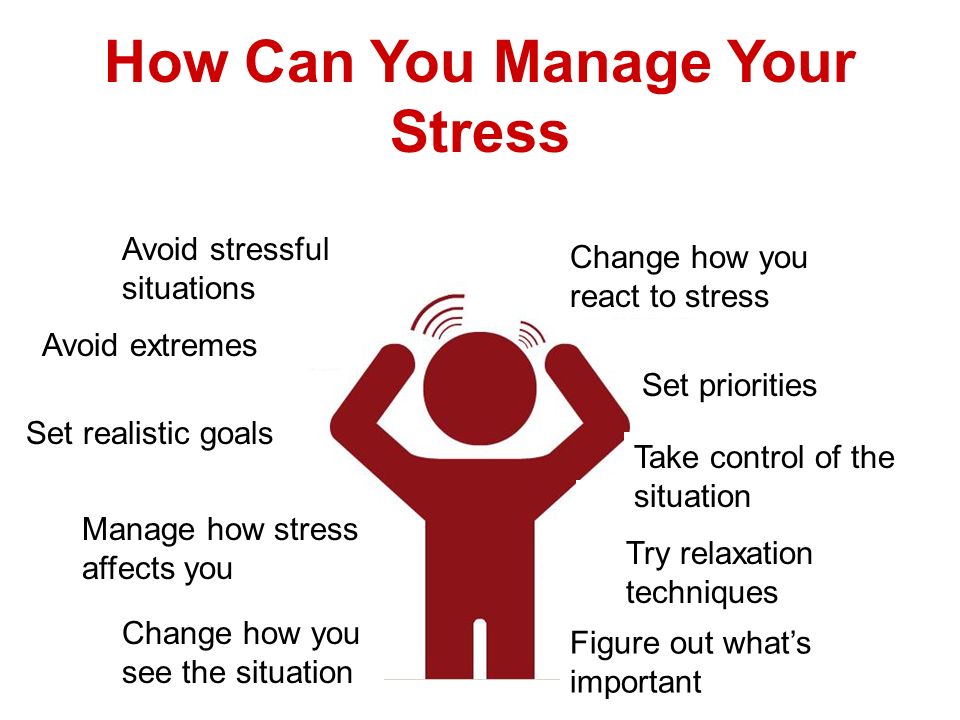 Dancing generically is safer and easier. If you try to pull off some awesome routine and bungle the execution you'll look clueless or goofy. You need to practice to make sure you look good. Some places to learn new moves are:
Dancing generically is safer and easier. If you try to pull off some awesome routine and bungle the execution you'll look clueless or goofy. You need to practice to make sure you look good. Some places to learn new moves are:
- By watching strangers dancing at a club and stealing ideas from them.
- By watching your friends dance.
- By watching movies or music videos.
- Through online video tutorials.
- Through dancing-oriented video games.
- By experimenting and trying to come up with some moves of your own.
- By taking an actual class.
The best way to learn is to just practice
If you get into the habit of dancing around at home in the spare moments you're listening to music it won't be long before you start to get the hang of things. After that the more time you put in, the more you'll refine your style.
Get in front of a mirror, put some good music on, and start dancing to it in the basic way I mentioned above. Remember, if your instinct is to jump around a lot or be a bit spazzy, consciously tone yourself down. Try to get comfortable with the typical, boring way of dancing first. A lot of the time on actual dance floors you won't have that much room anyway, so if you only practice moves that requires a lot of space you'll be put in an awkward spot when you end up somewhere more packed.
Remember, if your instinct is to jump around a lot or be a bit spazzy, consciously tone yourself down. Try to get comfortable with the typical, boring way of dancing first. A lot of the time on actual dance floors you won't have that much room anyway, so if you only practice moves that requires a lot of space you'll be put in an awkward spot when you end up somewhere more packed.
One way to deliberately practice is to try working on one aspect of dancing at a time, then putting the pieces together. This may not look good in the moment, but it'll let you concentrate on and isolate certain aspects of how you move. So you might keep everything else fairly still, and only try out different arm movements, or ways of moving your torso. Or you could try different ways of stepping back and forth, or moving only one leg at a time.
Article continues below...
Practice different dancing scenarios
Aside from figuring out how to move your body, there are different situations you'll find yourself dancing under:
Dancing on a dance floor where you have a lot of room
This is the easiest as you have all the space you need, and you can do somewhat more showy stuff if you feel like it. Sometimes the ocean of space can feel like too much to work with or make you feel exposed and self-conscious though.
Sometimes the ocean of space can feel like too much to work with or make you feel exposed and self-conscious though.
Dancing on a crowded dance floor
Here your movements are really restricted. When you're practicing make sure to keep your feet rooted to the ground and don't swing your arms out too much. Try to make your movements look good anyway.
Dancing close and face to face with someone else
The issue here is knocking knees and not being able to extend your arms too far in front of you. Try dancing really close to a wall to get an idea of what it's like. Or you can try dancing really close to a full length mirror. It's totally goofy looking, but it's still a good way to get used to the feeling of being near someone.
Dancing with a partner
Here I'm referring to partner dancing in an informal, improvised way, not doing a specific dance like the Tango. Of course this is something that you can't practice on your own super effectively. Still, you could put your hands out in front of you like you're holding someone's waist or shoulders and practice moving within that restriction.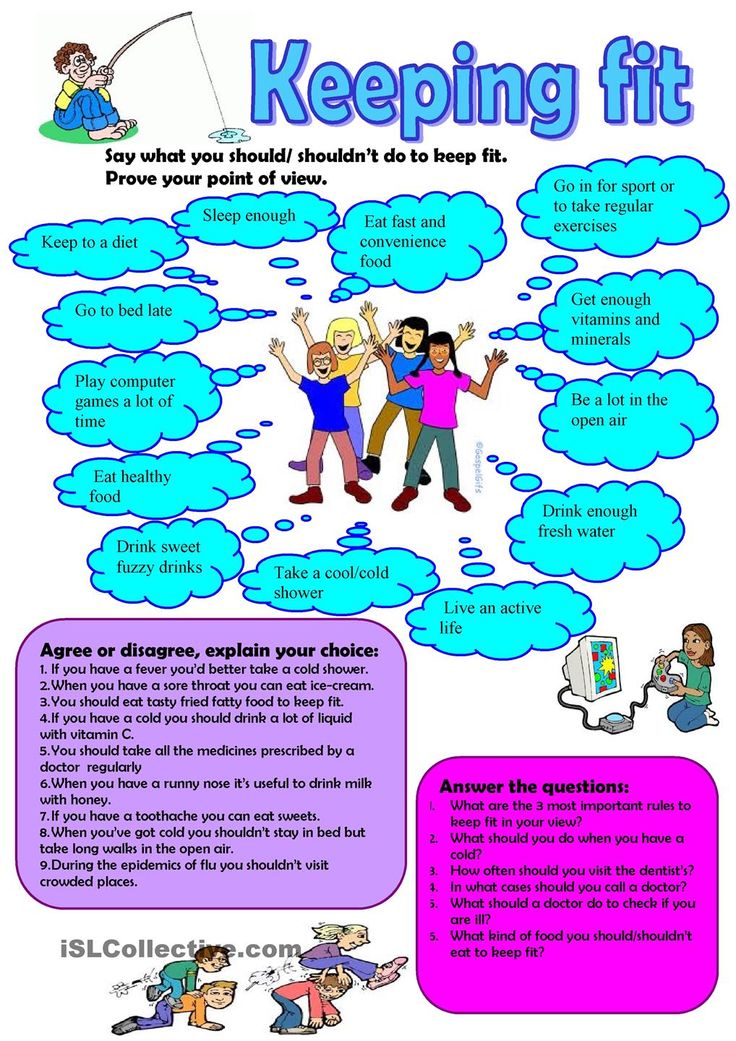 I don't blame you if you don't want to do this. It's definitely a bit silly. Still, if the idea of dancing with someone makes you uncomfortable, practicing like this can take the edge off.
I don't blame you if you don't want to do this. It's definitely a bit silly. Still, if the idea of dancing with someone makes you uncomfortable, practicing like this can take the edge off.
More practical advice would be to take a salsa, swing, or ballroom dancing class, asking your friends to teach you to dance, or practicing with your partner, if you're seeing someone. If it doesn't make you anxious, you could even try going to a club and trying to dance with someone you meet there.
Non-verbal communication is important as well
Body language plays a role in dancing too. It would look strange if someone was dancing to a 70's funk song with the mannerisms and facial expressions of someone listening to 90's Gangsta Rap. You don't want to be too exaggerated or hammy with your body language, but it is something to subtly bring into the equation. The other basic thing about body language is that sometimes the difference between someone who looks good and so-so on the dance floor is their non-verbals.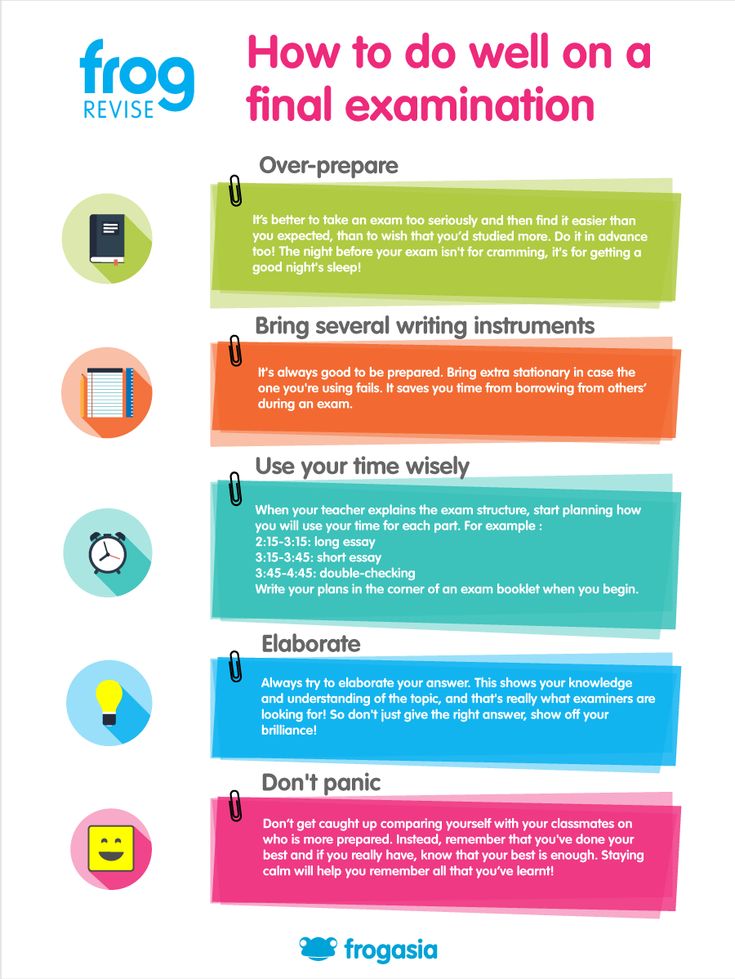 If someone looks uncomfortable and bored, they may come across as dancing poorly. The same movements with some energy and confidence can look fine.
If someone looks uncomfortable and bored, they may come across as dancing poorly. The same movements with some energy and confidence can look fine.
Dancing is a physical activity
Simple tip here. The better shape you're in, the easier dancing will be. You'll be able to do more, have more energy, and keep at it for longer. Basic things like aerobic fitness, flexibility, and some endurance in your legs and torso help.
Dancing to an unfamiliar style
For the poppy dance music you most typically hear in bars and clubs you can usually get away with dancing in the generic style I outlined earlier. Though if you've ever been to a club that caters to a different scene you'll know other genres of music have their own types of dancing.
If you're in one of these places, it's not the end of the world if you go ahead and dance the usual generic way, and just try to make your movements conform somewhat to that subculture's style. You won't fit in perfectly, but no one is going to run you out of the joint. However, if you're interested in dancing to that type of music more in the future, it's obvious that you'd want to try to learn its more specialized moves.
However, if you're interested in dancing to that type of music more in the future, it's obvious that you'd want to try to learn its more specialized moves.
A semi-warning about dance classes
Without a doubt you'll learn a lot if you a take a class, but sometimes people get a shock when they then go to a club and have to dance spontaneously. They can't just start swing dancing or bust out a 14-step choreographed Hip Hop routine. There are people who have taken years of dance classes, but they're inhibited when it comes to dancing at clubs. They feel lost, put on the spot, and like they're expected to perform.
Dancing badly on purpose
I think there's a good time and a bad time to dance in a poor or silly way as a joke. The bad time to do it is when you're not comfortable or experienced with dancing, and you dance like goofball to avoid having to do it for real. People tend to see through this, and any humor that comes out of it only has a shelf life of a minute or so.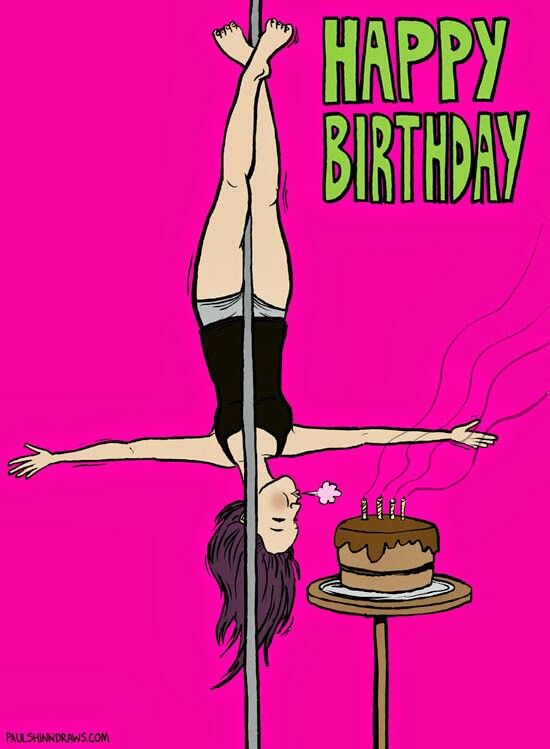
The good time to do it is when you're with some friends, you all know how to dance properly, and you just throw in the occasional campy movement or routine as a way to joke around and have more fun. It comes off well in this situation because everyone realizes you're doing it because you choose to, not because you're trying to hide how ill at ease you feel.
Drinking to loosen yourself up
Lots of people need to get some alcohol in them before they feel confident enough to hit the dance floor. In a perfect world everyone would feel comfortable dancing stone cold sober, but realistically some of us need a little extra help. Within reason I think this is fine.
When alcohol tends to be helpful is when someone knows how to dance half-decently, but are just a smidgen reserved - most people basically. When drinking tends to backfire is when someone doesn't really know how to dance, and never tries unless they're totally hammered. The results can be pretty sloppy. Things can also get embarrassing if someone is just learning how to dance and is inclined to be spazzy. The alcohol tends to bring those tendencies to the surface.
Things can also get embarrassing if someone is just learning how to dance and is inclined to be spazzy. The alcohol tends to bring those tendencies to the surface.
In conclusion
This is a trite thing to say, but despite everything you've just read, you should just enjoy yourself and not over analyze things. Have fun and don't worry about what other people think of you. Blah Blah Blah. The end.
How to prepare for the first dance lesson? What to bring to dance classes?
Contents
If you are visiting a dance studio for the first time, it is important to know how to properly prepare for the lesson. To do this, several points must be taken into account. Then you can feel confident and "armed" for dancing.
What to bring to the dance class
The ideal option is to have a bag or a backpack, which will always contain the necessary things for classes. Then you will be sure that you have taken everything you need with you and have not forgotten anything.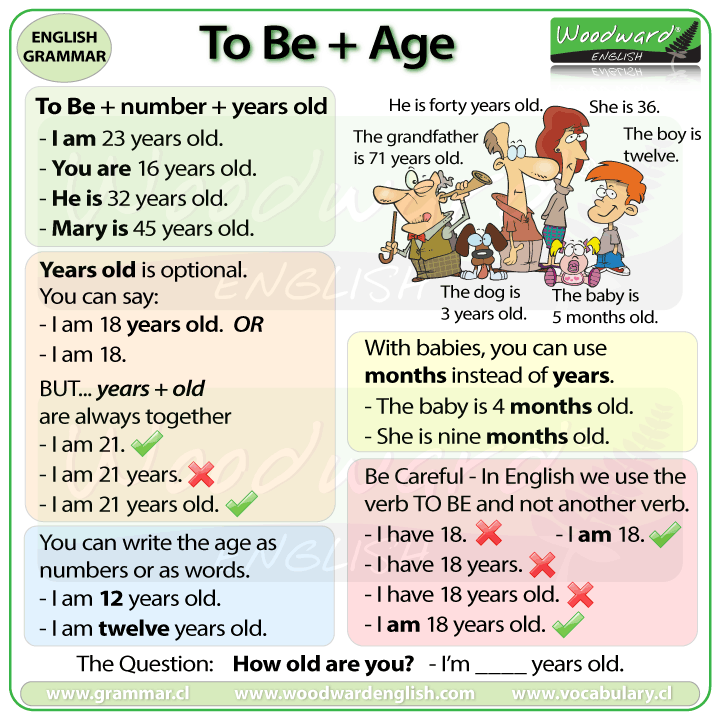 What should be put in such a bag? nine0003
What should be put in such a bag? nine0003
Clothes
To figure out what clothes are right for you for dance lessons, you need to know for which direction you choose them:
- Tight clothes made of elastic fabric are suitable for ground lessons. It can be leggings, a T-shirt, a T-shirt. Give preference to sports options, without a variety of fasteners, rhinestones, zippers. They can injure you or your partner. Avoid clothes made from low-quality synthetic materials that are poorly breathable and do not absorb moisture. Moreover, the idea of exercising in leatherette leggings should be abandoned. The fit should be medium or high so that the leggings do not slip during active movements. Some people are comfortable in shorts, but not all. Bare feet can be damaged by contact with the floor. nine0017
- For active styles like hip hop or contemporary, looser clothing is more suitable. Wide trousers, oversized sweaters, T-shirts several sizes larger will allow you to feel comfortable and fully open up in the dance.

- Leotards (one-piece leotard) are purchased for classical dance styles. The sleeve can be long or short. Leggings are worn under the tights, but of a lower density.
Sign up for a trial lesson
Clothing should not be provocative, exposing those parts of the body that should not be exposed in public. Avoid transparent fabrics, underwear should not shine through. If you are comfortable wearing a top and shorts, make sure they are long enough. Choose clothes based on the temperature in the lesson. Do not dress too lightly if it is cold in the hall and vice versa. If you get hot during the dance, you run the risk of hypothermia while you remain motionless. nine0003
Choose clothes according to your taste, so that it is not only comfortable, but also uplifting, setting you in the right mood.
Shoes
Just as important as clothing. It should also be selected, focusing on the style of dance. For hip hop, stable sneakers or sneakers will be relevant. "Balniks" are recommended to practice in special shoes, as well as those who are fond of step. But oriental and Latin American dances will be more "economical". For them, ordinary shoes are suitable or you can do without them at all. nine0003
"Balniks" are recommended to practice in special shoes, as well as those who are fond of step. But oriental and Latin American dances will be more "economical". For them, ordinary shoes are suitable or you can do without them at all. nine0003
It is possible to train in socks, if we are talking about stalls or contemporary. But there is a risk of falling if the floor is too slippery. It will also be difficult to perform some of the tricks. In this case, Czech or half shoes would be ideal.
What else to put in your bag
In addition to clothes, there are a few other things to keep in mind when preparing for dance lessons:
- If you have weak knees and ankles, take care to protect them. For this, knee pads and elastic bandages are useful. To protect the lower back from hypothermia, a warming belt is suitable. nine0017
- Additional “equipment” includes weights. Whether you need them or not is up to you. They are not suitable for beginner dancers.
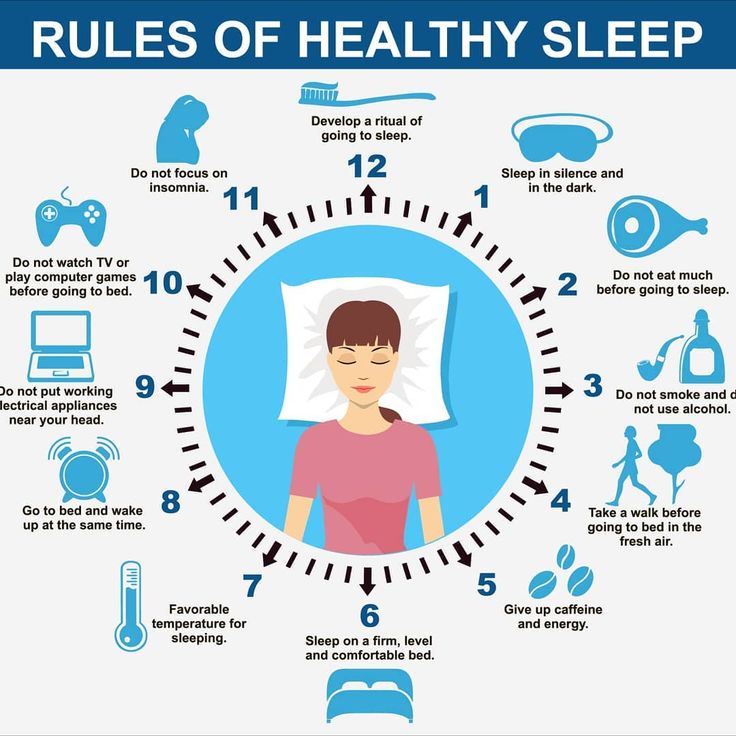 Weights are for arms and legs. Their weight starts from 0.5 kilograms.
Weights are for arms and legs. Their weight starts from 0.5 kilograms. - For those with long hair, elastic bands and hair clips are required to help them collect. Loose hair is not always comfortable to deal with.
- Be sure to pack a large bottle of water in your bag, as you're bound to get thirsty when you exercise. nine0017
- Use a small towel that absorbs moisture well. They make it easy to wash your face.
Don't wear make-up before going to class. In the process of training, there is a risk that the makeup will flow and smear. Also avoid strong-smelling perfumes and deodorants. People around you may not only have a different taste for aromas, but also be allergic to them. But the use of antiperspirants will allow you to feel more confident in training and avoid unpleasant situations. nine0003
Do not go to class if you feel unwell. When you exercise, you may get worse. In addition, you can accidentally infect other students or teachers.
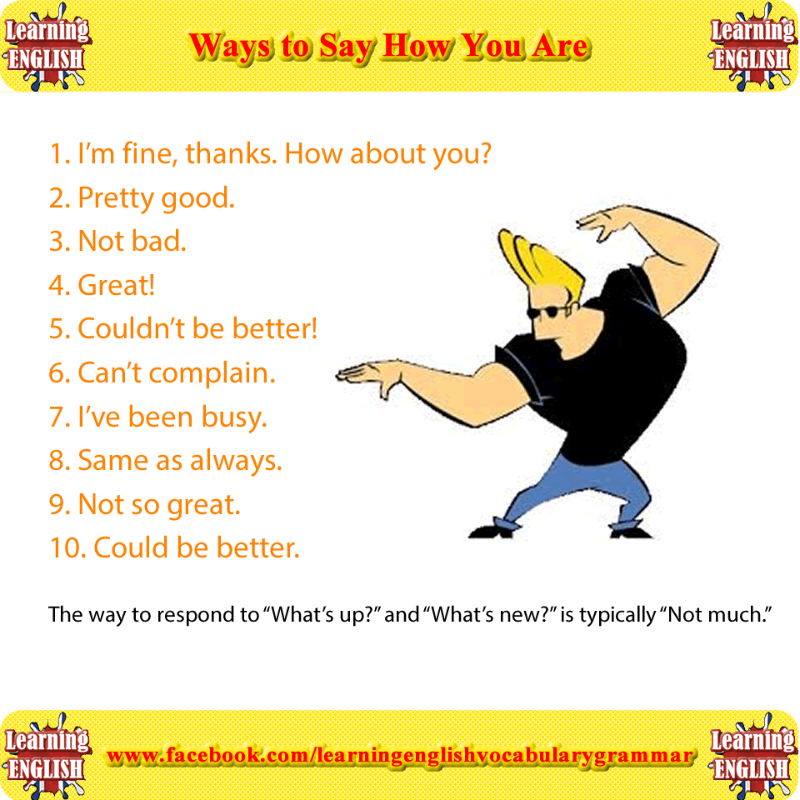
Don't go to training hungry. You are provided with a breakdown, and they are very necessary for dancing. But you also don’t need to eat immediately before training, the optimal time for eating is an hour before training. Overeating before dancing is also not worth it, it will make you sleepy, your movements will slow down and become difficult. The same goes for lack of sleep. It will affect the quality of training not in the best way. nine0003
And, most importantly, be sure to take a good mood with you! The result and emotions from the training directly depend on the attitude with which you engage. If you are upset or depressed, then the dance class and the atmosphere can be the best medicine. After him, there will be no trace of a bad mood!
7 tips for those who want to learn how to dance
September 9, 2020 Reno5 A life
Dancing is a great way to make friends with your body and gain self-confidence. And yes, they can be mastered at any age.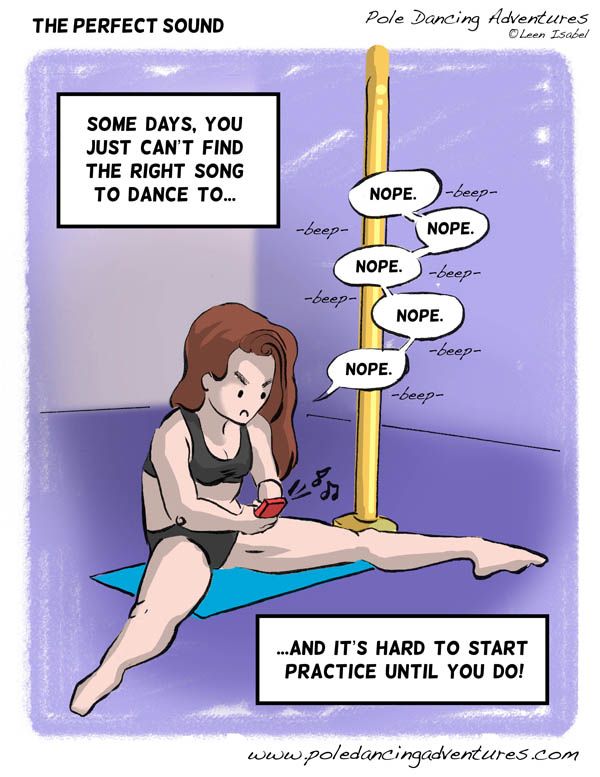 nine0003
nine0003
1. Choose your style
The idea here is the same as for sports: if you secretly hate yoga or iron exercises, you are unlikely to go to workouts week after week. To achieve noticeable progress in dancing, a beginner will have to practice a lot and regularly, so it’s better not to torture yourself and choose a direction that really ignites.
You can focus on the music that you like - you need to catch the drive from movements to it. It is music that forms the style of dance and its energy, so decide what is closer to you: for example, funk lovers should try popping or locking, folk fans may like Irish dancing, and if you respect jazz, swing and everything like that, take a closer look at lindy hop. nine0003
Another criterion is the nature of the movements. Some are closer to dynamic, as in hip-hop, others are smooth and sensual - for this in tango. There are also health restrictions to consider. So, twerk is not suitable if there are problems with the lumbar spine, with sore knees it is better not to get involved in shuffle, and it will be difficult for an aged person to master house.
2. Set a goal
Photo: Iakov Filimonov / ShutterstockYou can start dancing at any age, but it's important to keep in mind why you started it in the first place. It is perhaps too bold to expect that in half a year of classes it will be possible to reach the level of international dance championships from scratch. But if you want to try dancing in order to develop plasticity and learn to feel the body better, great, go ahead. nine0003
Don't expect to get it right the first time. When you learn from scratch, difficulties are absolutely normal, the main thing is not to score in classes. Over time, both the correct posture and a beautiful gait will be developed, and as a bonus you will also get self-confidence - with freedom of movement, freedom from complexes will come.
3. Don't give up on sports
Some dances in themselves make for a good workout. A vigorous shuffle will replace cardio, and a break can give a load to almost all muscle groups. And yet, without preparation, it will not be easy.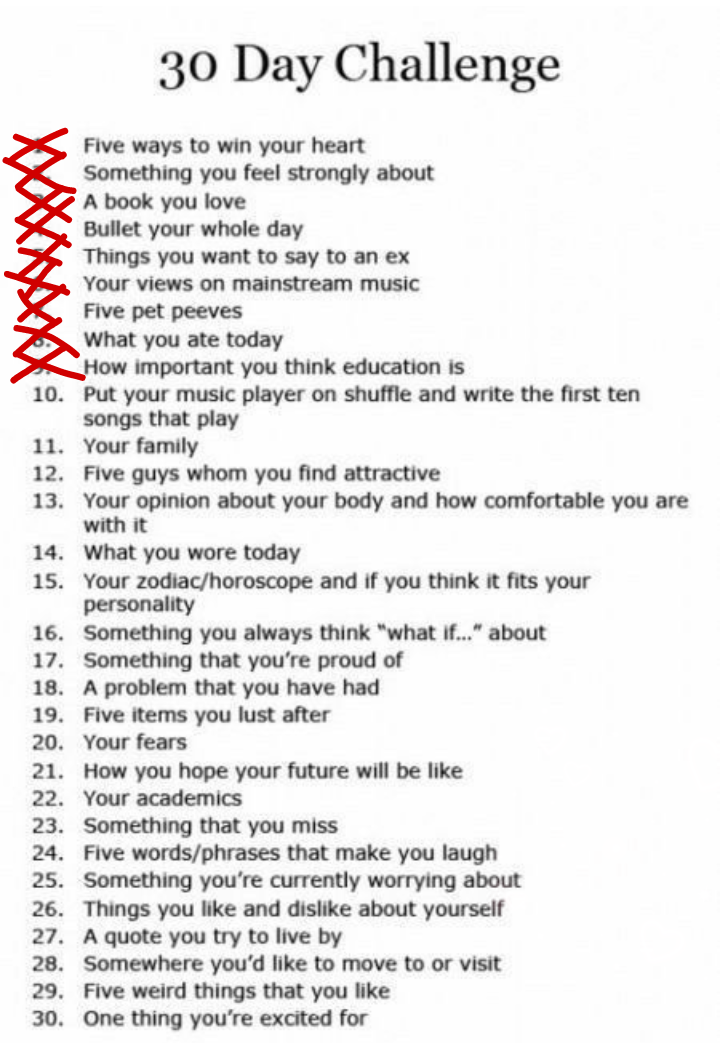 A more or less good stretch is needed in any type of dance, and, for example, strong arms and strong abdominal and back muscles are also useful for pole dancing. You can combine dancing with strength exercises, but you need to give the body time to recover and not plan classes in a row, but allocate at least a day of rest between them. nine0003
A more or less good stretch is needed in any type of dance, and, for example, strong arms and strong abdominal and back muscles are also useful for pole dancing. You can combine dancing with strength exercises, but you need to give the body time to recover and not plan classes in a row, but allocate at least a day of rest between them. nine0003
And don't forget to warm up before dancing. So that the training does not end with an injury, the muscles and joints need to be prepared for the load. You can allocate 10–15 minutes for a warm-up, it should include simple articular gymnastics (at least elementary rotational movements of the shoulders and knees), tilts and dynamic stretching.
4. Take some lessons from a trainer
Especially if you have never danced before. Those with experience can learn new styles at home with video tutorials, but that's because they already know how to control their bodies. Beginners are unlikely to succeed, but disappointment in themselves and demotivation are guaranteed - if you can’t repeat elementary movements, then there’s no point in doing it. nine0003
nine0003
Nothing really strange here. Without preparation, it is difficult to just take it and start moving freely. At least the basic elements are better to learn under the guidance of a pro, and when you feel that you can handle it, supplement these lessons with home workouts.
5. Learn something new in every class
When you repeat the same set of exercises and movements over and over again, classes turn into a good way to pass your free time, only you can forget about progress. Acquaintance with new elements is the same mandatory part of any workout as a warm-up. It doesn't matter if you work with a mentor or on your own. nine0003
Do not immediately try to copy cool dancers. First, study the basic movements, then try to combine them into bundles until you hone them to automatism, and then experiment and improvise, creating something new based on familiar elements.
6. Record yourself on video
It is not necessary to record the entire workout from the warm-up, it is enough to record only those moments with which you have problems. These can be separate movements or bundles that are not given in any way. Review the video and, if possible, objectively assess what is wrong: perhaps there are technical problems that are difficult to notice in the process. When you understand what's wrong, try to repeat the movement and record it on video again - and so on until you achieve a good result. nine0003
These can be separate movements or bundles that are not given in any way. Review the video and, if possible, objectively assess what is wrong: perhaps there are technical problems that are difficult to notice in the process. When you understand what's wrong, try to repeat the movement and record it on video again - and so on until you achieve a good result. nine0003
This approach will help you find errors and track progress. You can not even limit yourself to memorized ligaments, but improvise - then see how it looks from the outside.
7. Find like-minded people
Photo: Iakov Filimonov / ShutterstockIf you need an extra reason not to miss classes, then meeting new people can be a good motivation. It is easier here for those who train in a group. Often the dance school becomes the center of a close-knit community, where people come not only for the sake of classes, but also just to spend time together at dance parties. nine0003
Finally, the more partners around, the more experience.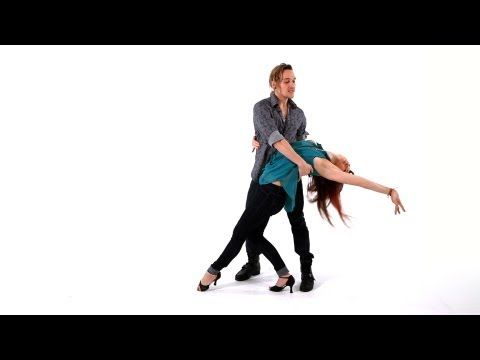 Do not limit yourself to dancers of your level of training and practice with those who are stronger or weaker than you. In the first case, you will be able to improve your skills, and in the second, you will try yourself as a coach - this, by the way, is a good way to learn to take more initiative and understand the very principle of movement in dance, and not just memorize the alternation of chords.
Do not limit yourself to dancers of your level of training and practice with those who are stronger or weaker than you. In the first case, you will be able to improve your skills, and in the second, you will try yourself as a coach - this, by the way, is a good way to learn to take more initiative and understand the very principle of movement in dance, and not just memorize the alternation of chords.
Stay fit and connected with the OPPO Watch. They have two powerful processors, a bright AMOLED display, 1 GB of RAM and 8 GB of internal memory, Bluetooth, Wi-Fi and NFC modules. And more than 90 training modes, including those designed specifically for ORRO. Work out cooler with music, you can listen to it in streaming services or download tracks to the memory of your watch.
If you want to enjoy clear sound, the OPPO ENCO W31 Wireless Headphones will come in handy. Two-level noise reduction system, easy operation and stable connection will make listening to music and talking on the phone as comfortable as possible.
